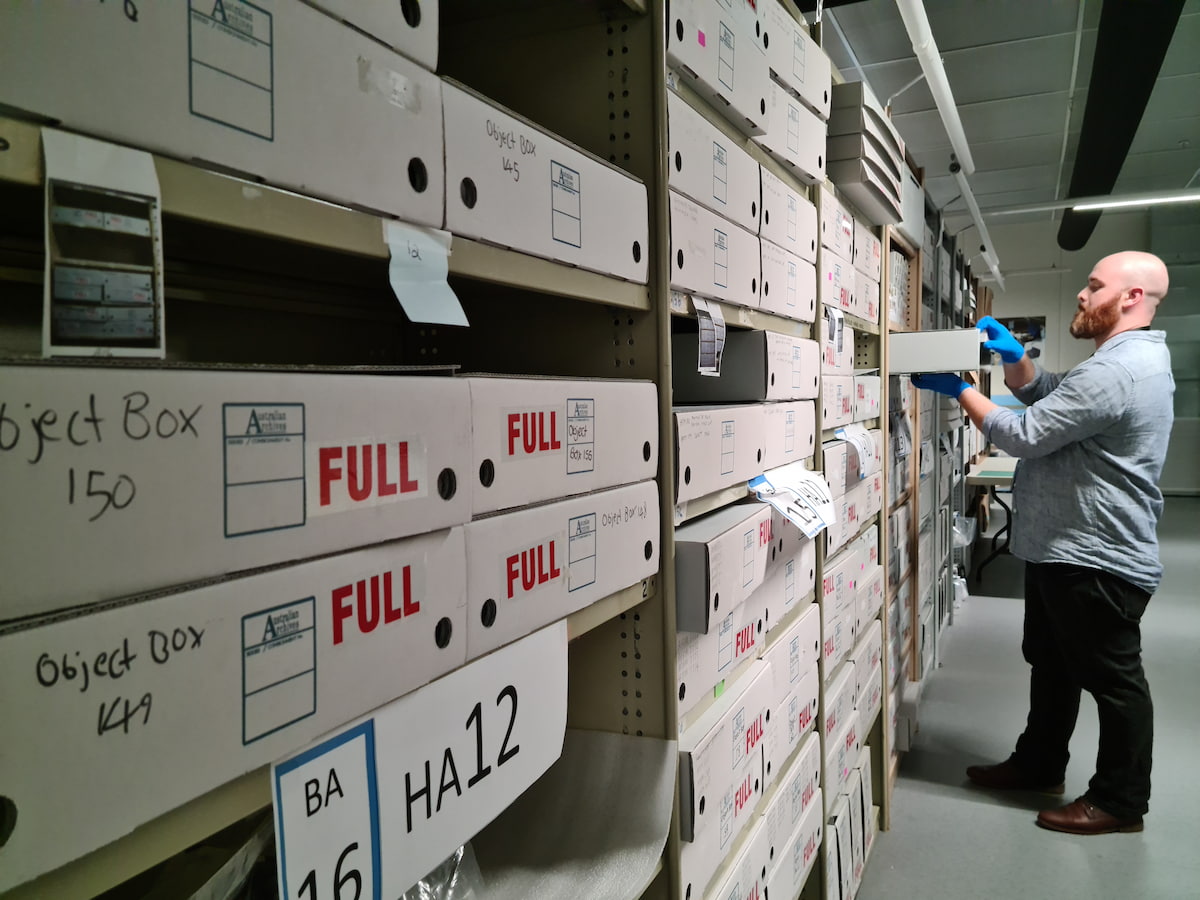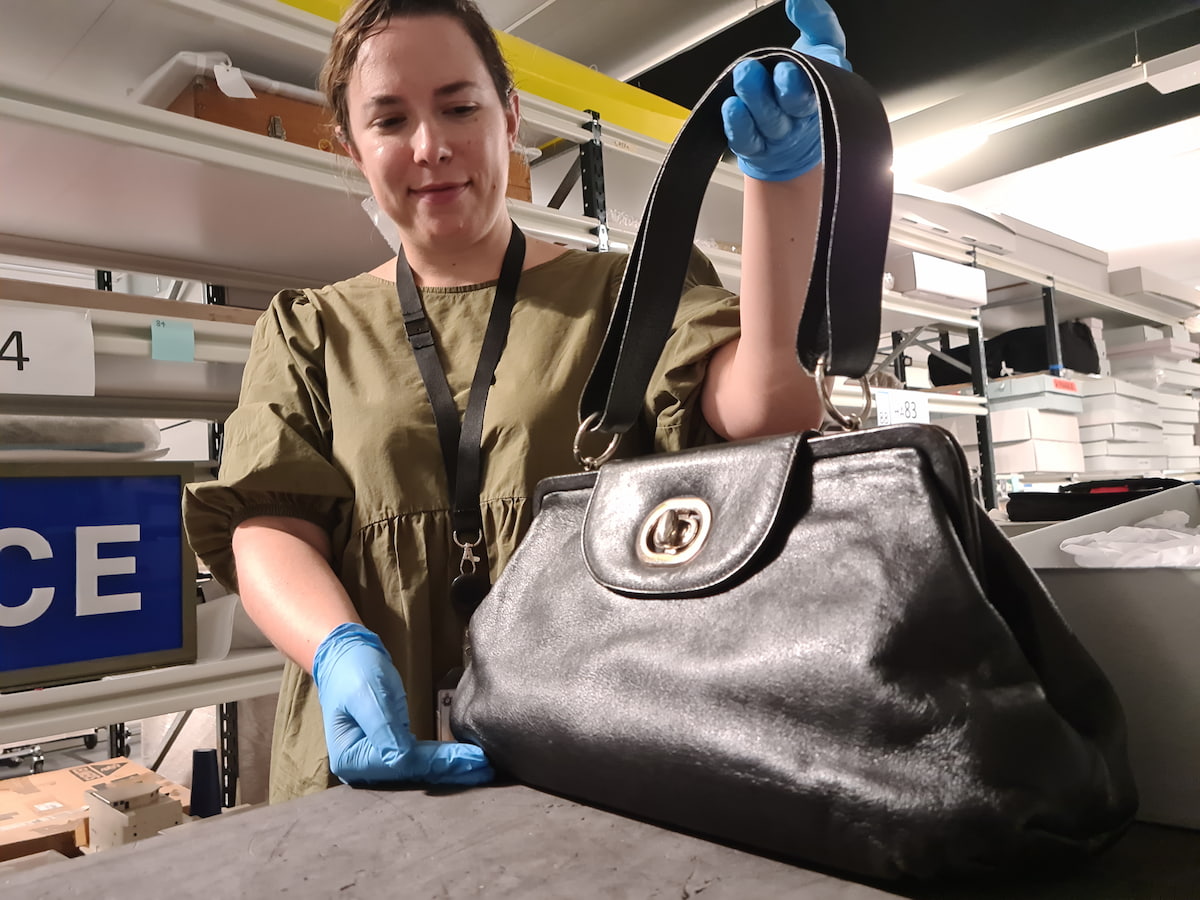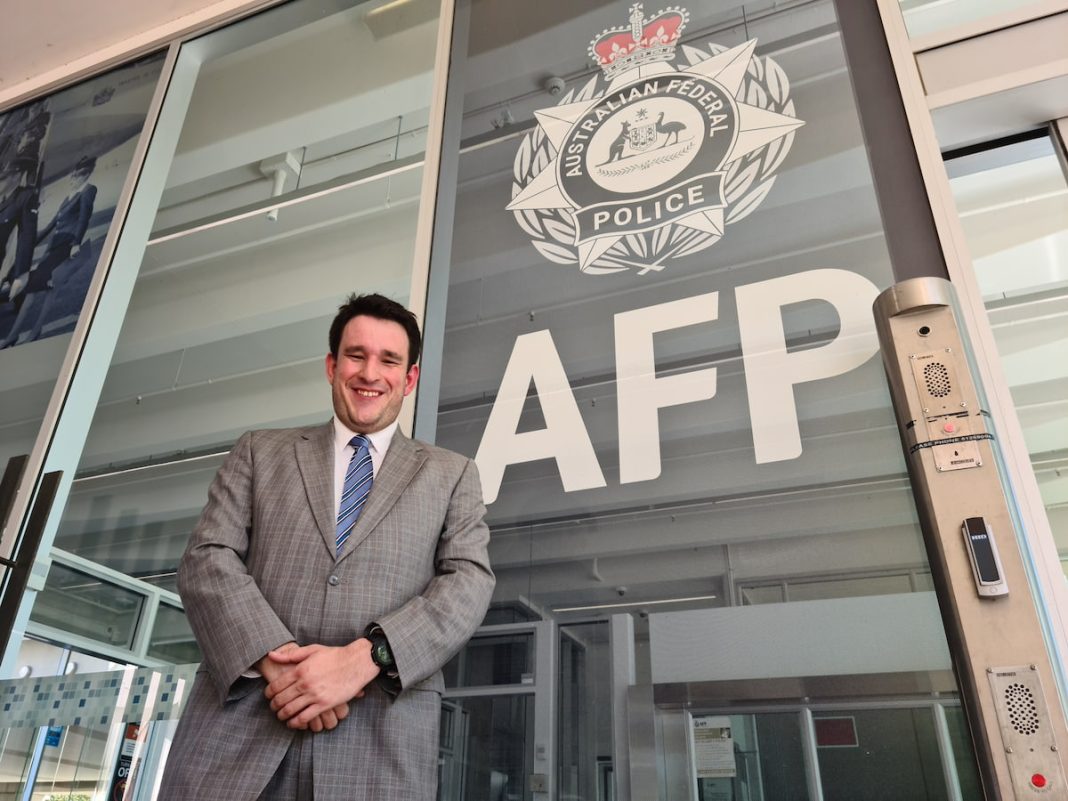Which came first, the chicken or the egg? Well, it’s the egg because when it comes to the AFP, the yolk started it all. This little-known gem is one of 20,000 stories locked in a vast, high-security warehouse in Hume – a museum that’s been closed to the public for more than 20 years.
Canberra Daily toured the AFP Museum on – coincidentally – the anniversary of the 1978 Hilton bombing, which was the impetus to create today’s Australian Federal Police.
The museum’s oldest exhibit is a hand-written document from 1917, penned by PM Billy Hughes, calling for a Commonwealth Police Force. He’d just been egged.
“Billy Hughes was trying to get conscription over the line so he was doing a tour of the country trying to promote the idea,” explains AFP Museum team leader, Aiden Silvestro.
“He’s at a train station in Warwick, Queensland, where a protestor gets him right in the head with an egg. He commands a nearby Queensland police officer to arrest the man but the officer states to him, ‘I work for Queensland police, I don’t answer to you. You don’t have jurisdiction’.”
So Hughes got cracking (pun intended) and immediately wrote a telegram on the train back to Sydney, calling for a Commonwealth Police Force. Legislation was in place within a fortnight and 20 Commonwealth Police officers were sworn in two weeks later.
The story gets better – there’s a current AFP staff member in Canberra, who’s a distant cousin of both the egger and the Queensland Police Officer. Dominic Andersen-Strudwick is proud of his lineage.
“Funnily enough, the egg-thrower’s cousin was the Queensland Police Officer who refused to arrest him – part of it being they were cousins,” Dominic says. “I’m proud of [the connection], it really does feel like I’m at home in a way, working here, a nice full circle.”
I asked Dominic if he came from a long line of eggers.
“There’s been no repeats of the egg-throwers, we’ve got a few police officers in the family since. I obviously support anybody’s right to protest peacefully, it’s a nice connection to what has become a key moment in the history of federal policing in this country.”
Back to the museum. Any CSI fan worth their salt will love this collection. There’s 1980s fingerprint technology (AFP had the world’s first national fingerprint database) and a prototype blue-light gadget for detecting blood spatter and body fluids (a world-first invention for the AFP).

It’s a shame the museum closed its doors to the public in 2002, a consequence of the Bali bombings and resulting increased security. The only regular visitors today are new AFP recruits, however, the museum is keen to raise its public profile. It’s open for private tours by appointment.
Spy fans will love the museum’s newest exhibit, an encrypted mobile phone that led to the AFP seizing 3.7 tonnes of drugs, 104 weapons, $44m in cash, and assets worth millions.
“These phones were sold on the black market and promoted to criminal organisations as an encrypted communication option if people didn’t want their texts known,” Aiden explains.
“What they didn’t realise was that it was a massive, covert honeypot operation. The AFP built a capability that allowed law enforcement to access, decrypt and read communications. For almost three years, the AFP and the FBI monitored criminals’ encrypted communications.”
What they found were plots to kill, mass drug trafficking and gun distribution. The workings of the phone are still classified.
In the museum’s wardrobe aisle are old AFP uniforms – the most dated version being the first female police uniform complete with handbag to carry the pistol, high-heels and a skirt.
“With the handbag that carried the pistol, often women would actually say that it was easier to hit someone over the head with a handbag than it was to get the gun out of the bag,” says Marina Simoncini, AFP communications and customs manager.

There’s also a 1974 Ford Falcon XB Special Pursuit 500 Sedan. Its V8 engine, suspension and gearbox were modified by Ford Australia for better performance in pursuits, nicknamed a ‘wolf in sheep’s clothing’ because of its relatively unassuming street presence. Plus there’s a surveillance van, used by Commonwealth Police in the mid-1970s.
“Near the end of its service it was monitoring a wedding in December many years ago,” Aiden says. “The operator in the vehicle called out and said it’s too hot in here, it’s 40 degrees, I need someone to take over. Then the radio went quiet. He’d collapsed, so they sent two people out to crack a window and get him out – meanwhile there was a wedding happening right next to where they went and smashed the window of the van, only to work out very quickly it was the wrong van.”

There are plenty more tantalising tales, like the Interpol red notice for fugitive Christopher Skase, a drug boat that hid 225kg bricks of cocaine worth $980m, and a stolen cricket bat signed by Don Bradman and PM Robert Menzies.
Some stories are tragic – twisted steel from the Royal Canberra Hospital implosion, and a melted bundy clock from the Bali bombings. Some stories are miraculous – the uniform of a rescuer at the Thredbo landslide, and diving masks from the Thai cave rescue. Oh, and nine worn-out Kenny Koala puppets.
The AFP Museum should be on everyone’s to-do list. Private visits are available 9am-4pm Wednesday – Friday. Visit the website for more details.



